10 Best Ridley Scott Storyboards to Give you Inspiration
- An introduction to Ridley Scott's storyboards
- Alien
- Prometheus
- Alien: Covenant
- Blade Runner
- The Martian
- Black Hawk Down
- American Gangster
- Gladiator
- Thelma & Louise
- The Duellists
Ridley Scott (born in 1937) is an English filmmaker known for directing Hollywood productions such as Gladiator, The Martian, Black Hawk Down, Blade Runner, and Alien.
He studied graphic design at the Royal College of Art, where he was also involved in establishing the film department. Ridley Scott's artful sketches and illustrations have helped him visualize scenes in his films. Here we'll look at ten of the most inspirational storyboards for his films.
The storyboarding art of Ridley Scott
Ridley Scott attended the acclaimed Royal College of Art from 1958 to 1961. Though he studied graphic design, he was drawn to film from early on. Just as he kept up with New York trends in advertising, Hollywood determined his idea of filmmaking. He cited The Seven Samurai, Citizen Kane and The Third Man and therefore Kurosawa and Welles as early influences. At RCA, Scott produced his short film, Boy on a Bicycle.
Riskey Scott's work is commended for its striking visuals and a singular vision so distinctive that you can recognize the director's mark regardless of the influences of production design or cinematography roles. A highly detailed approach marks his style. His eye for composition, lighting, and design seems to explain his ability to visualize a movie in his mind. He claims to have an eidetic memory and the ability to recall images with high precision. Storyboarding is key for Ridley Scott: his drawings are the vessel through which he can convey his ideas to the creative team. With Boord's commenting and feedback feature, conveying ideas through storyboards and responding to feedback is crucial for teams.
The Shortcut to Effective Storyboards.
Boords is an easy-to-use storyboarding tool to plan creative projects.
Get Started for FreeWhat are Ridleygrams?
Storyboards in filmmaking translate an idea into a visual representation, which the director can use to communicate with various departments. Ridley Scott is his own storyboard artist and storyboards his films himself. When he was starting out, this was a rare skill for filmmakers to have, and it points back to Scoot's art school past. The Royal College of Art was steeped in the fine arts. Scott's paintings and illustrations are close to pointillism: myriads of tiny points that result in images of high definition and extreme detail.
"Ridleygrams" is the name given to Scott's storyboards by collaborators. They tend to look like comic book drawings in the style of US-American artists, such as Richard Corben and Heavy Metal magazine. Scott's signature storyboards, or Ridleygrams, use the same rendering as the work of French artist and cartoonist Jean Giraud, who collaborated with Alejandro Jodorowsky and contributed to the design of Alien.
Ridleygrams are ink and pencil drawings and use a contour-based rendering to achieve both depth and volume. They convey detail and atmosphere almost as exact as the film shots. The similarity between storyboards and movie stills is often striking.
Get your FREE Filmmaking Storyboard Template Bundle
Plan your film with 10 professionally designed storyboard templates as ready-to-use PDFs.
The top 10 inspiring Ridley Scott storyboards
With four Academy Awards nominations for directing, British Academy Film Awards recognition and a BBC ranking among the most influential in British culture, Ridley Scott has certainly been acknowledged as a director. The art of storyboarding is an essential part of his filmmaking and Ridleygrams can be just as inspiring as Scott's movies, as countless Imgur albums will show you. We'll look at ten influential Ridley Scott films and the inspiration we can draw from their storyboards.
Alien storyboards and the Hitchcock inspiration
Ridley Scott's second feature film as a director, Alien, is not just a Sci-Fi flick from 1979, it's a claustrophobic horror movie in space, building slowly at the pace of an Alfred Hitchcock movie. The film classic Psycho has its infamous shower scene, sometimes said to be shot by artist Saul Bass, who also provided the memorable title sequence. Alien has a similarly iconic moment when the titular creature breaks forth from Kane's chest, played by John Hurt.
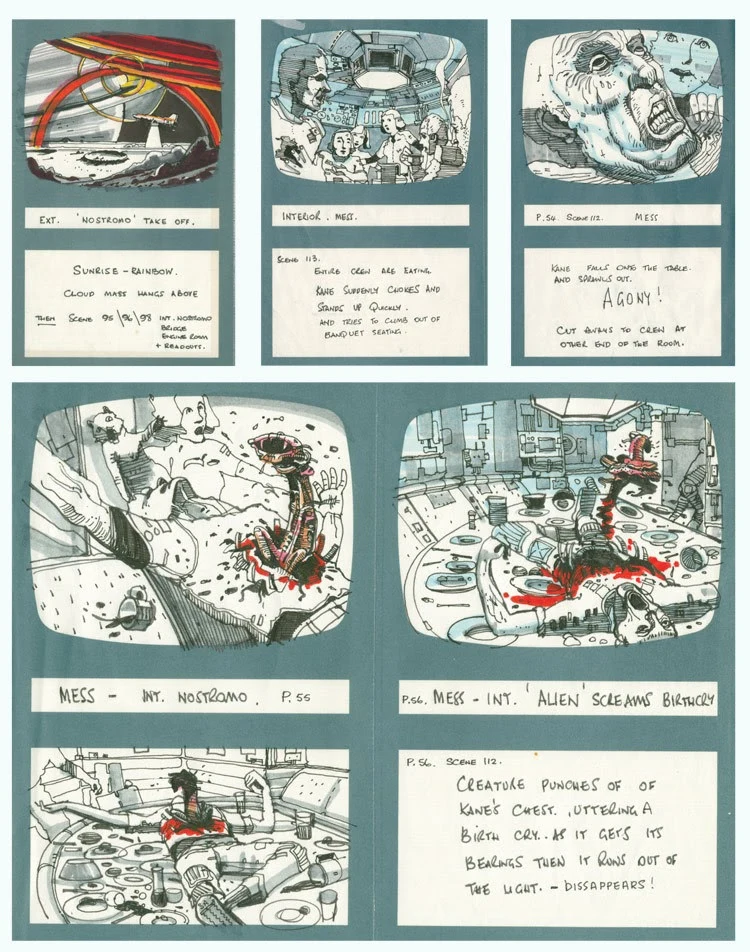
Starring Sigourney Weaver as Ellen Ripley, Scott is credited with having a heroine take point in the ensuing hunt aboard the Nostromo spaceship. Concept artist Ron Cobb designed the craft's interior and exterior in a "used future" aesthetic. He later returned to work on the sequel Aliens with director James Cameron.
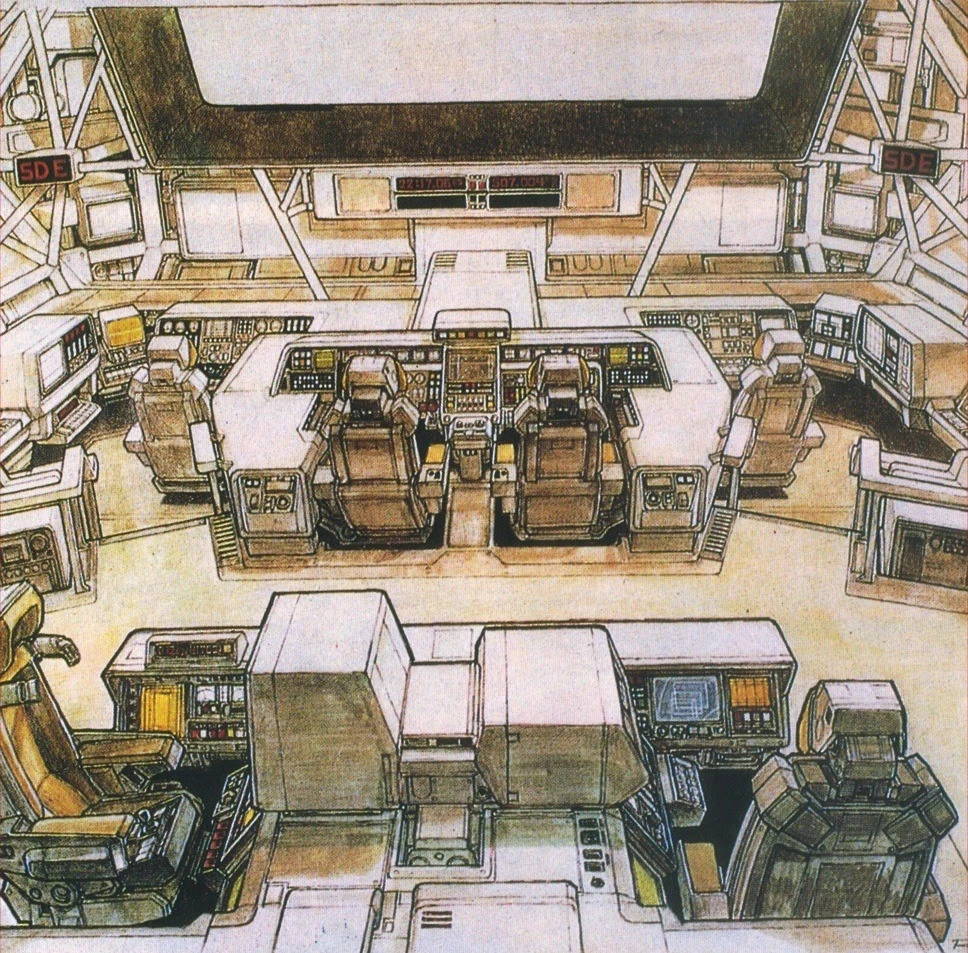
In Scott's words, the Nostromo is a spaceship that has been in use for "donkey's years". Though initially science fiction, once the Xenomorph is let loose, Alien becomes a horror movie that takes place in the sweaty basement of a haunted house.
Swiss artist, H.R. Giger, designed the creature from rubber and puppets. He and the special effects team helped the movie to win an Academy Award for visual design. Unlike the auteur approach of Alfred Hitchcock, Alien was a concept collaboration.
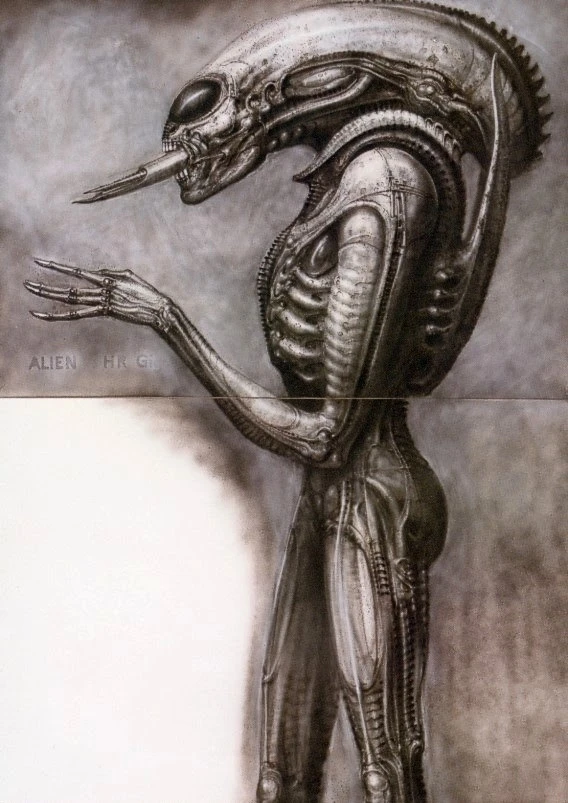
Scott's Ridleygrams played an essential role in pre-production. As a director, he had only had one feature to date, which made investors uneasy. However, his complex drawings were so good at conveying the look, feel and vision for the film that the studio signed on and doubled the budget.
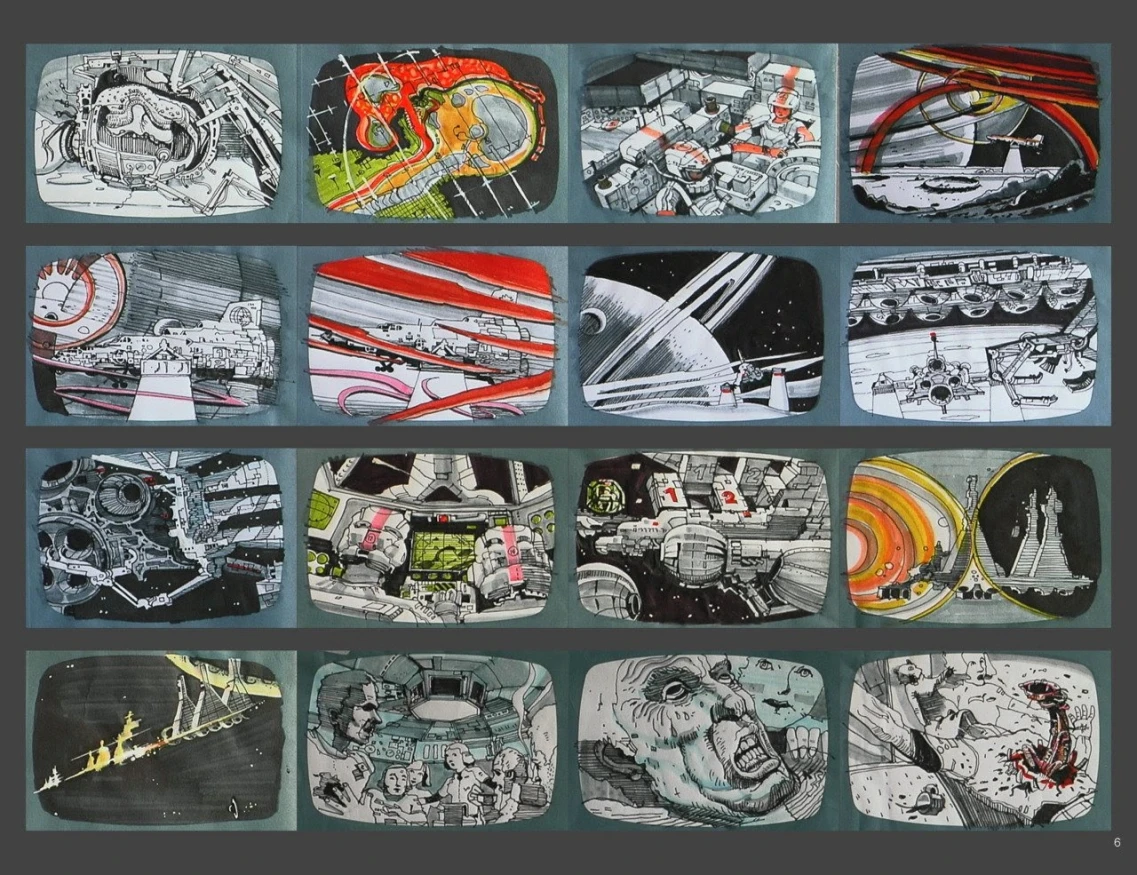
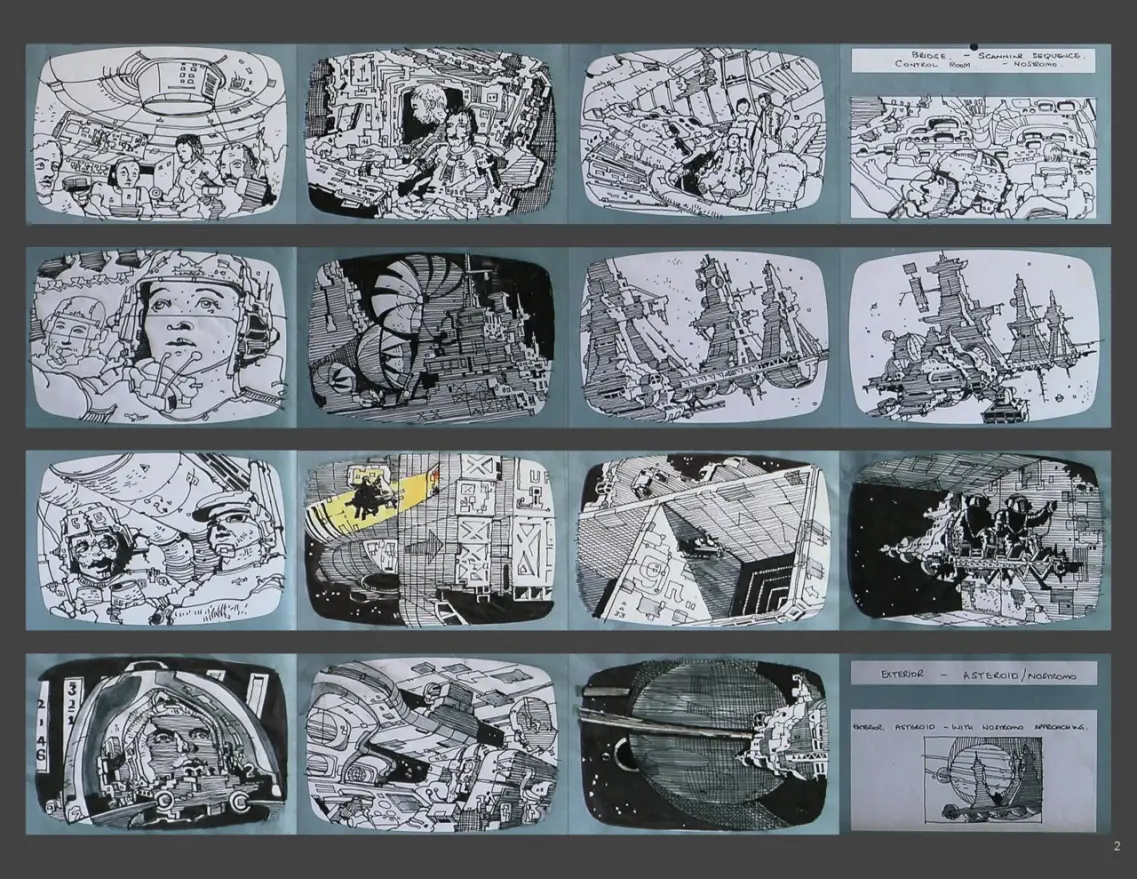
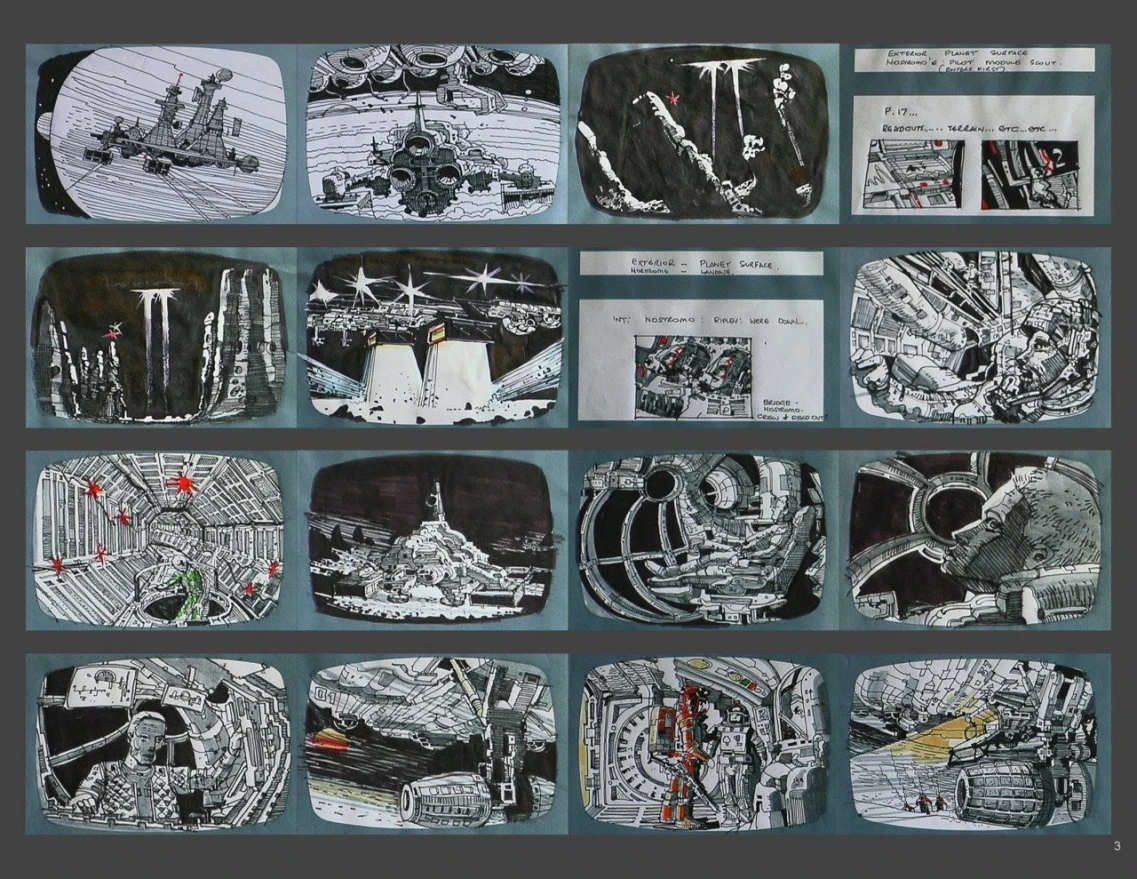
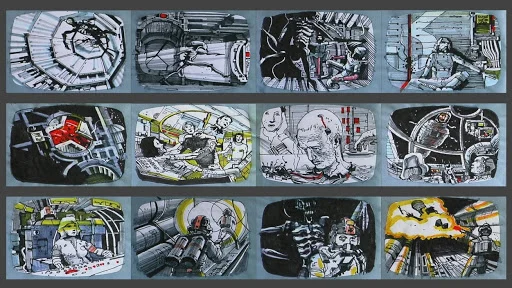
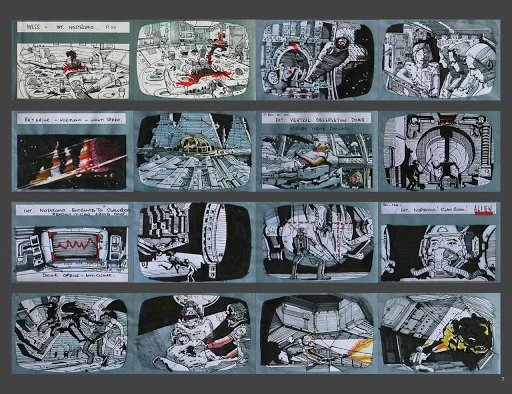
Alien concept art albums on Imgur
The internet is a treasure trove for images from the Alien movie with many Pinterest boards and Imgur albums. A collection of Alien concept art shows not only sketches and models, but also photographs from the production of the movie.
Prometheus
Prometheus is a prequel to Alien and the fifth instalment in the franchise from 2012 directed by Ridley Scott. The film again mixes science fiction and horror genres but is only loosely connected to the original Alien, introducing new ideas and mythology of its own.
The visual approach to the film combined old with new. Arthur Max led the production design and instructed his team to study the original Alien art by H.R. Giger, Ron Cobb and Chriss Foss for inspiration. Yet the film also uses 3D effects and relies heavily on CGI. Prometheus contains approximately 1,300 digital effects shots.
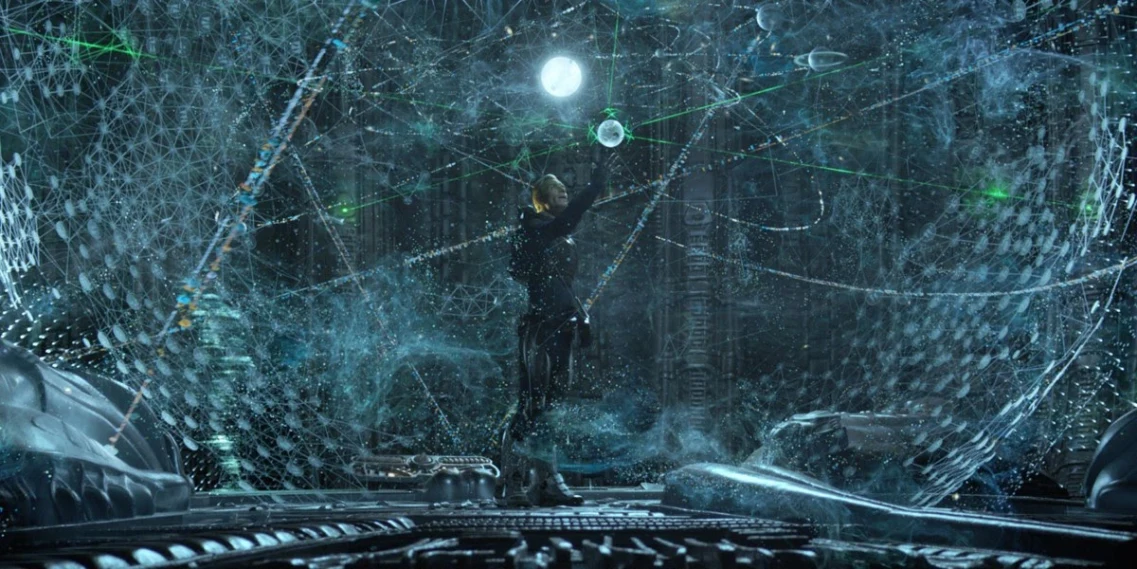
For the 3D holographic star map in the film, Scott was inspired by a 1766 painting with "circles within circles". The final shot was one of the most complex visual effects in the movie.
_Ridley Scott talks about storyboarding and Prometheus_Alien: Covenant
Scott's third Alien movie is the 2017, Alien: Covenant. This was a sequel to Prometheus and merged the two storylines. Art director, Damien Drew, went for realistic creatures and Xenomorph effects throughout the film. Concept artist, Carlos Huante, shared his work, including sketches and storyboards, from the production.
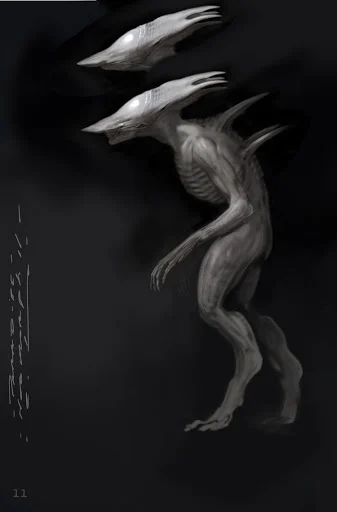
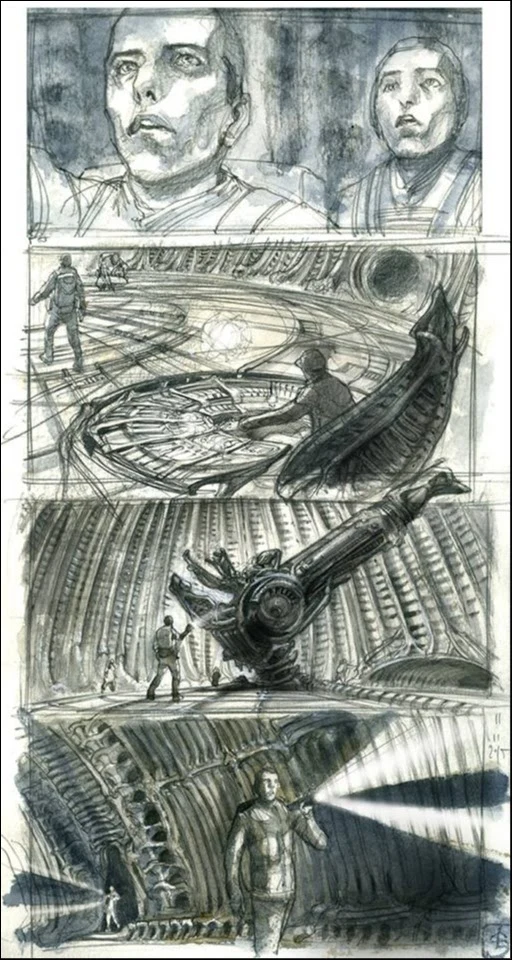
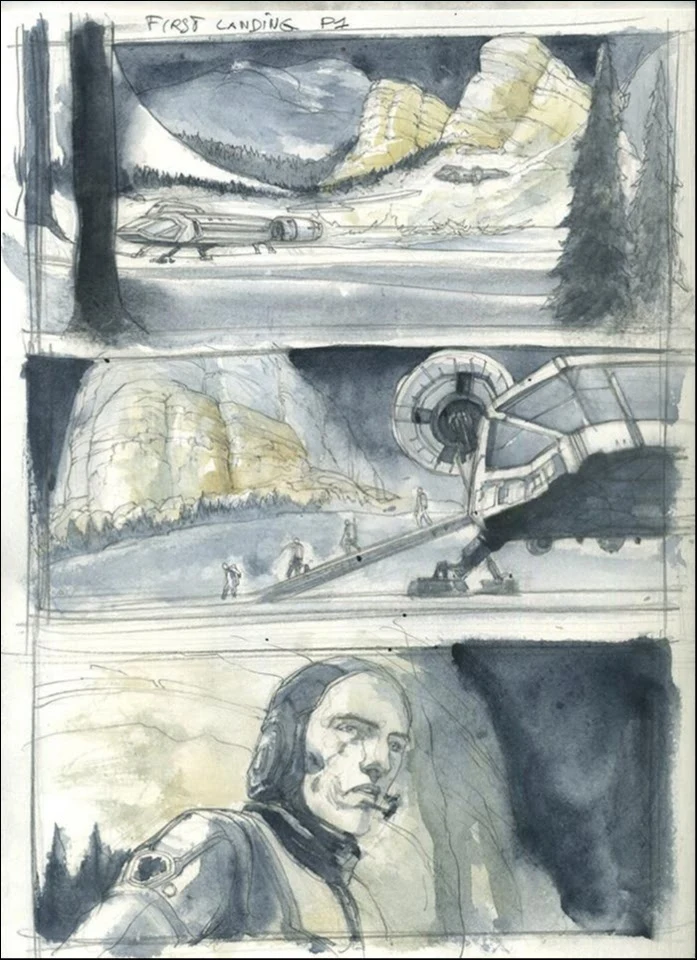
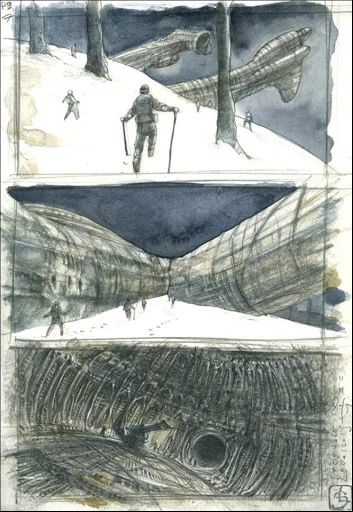
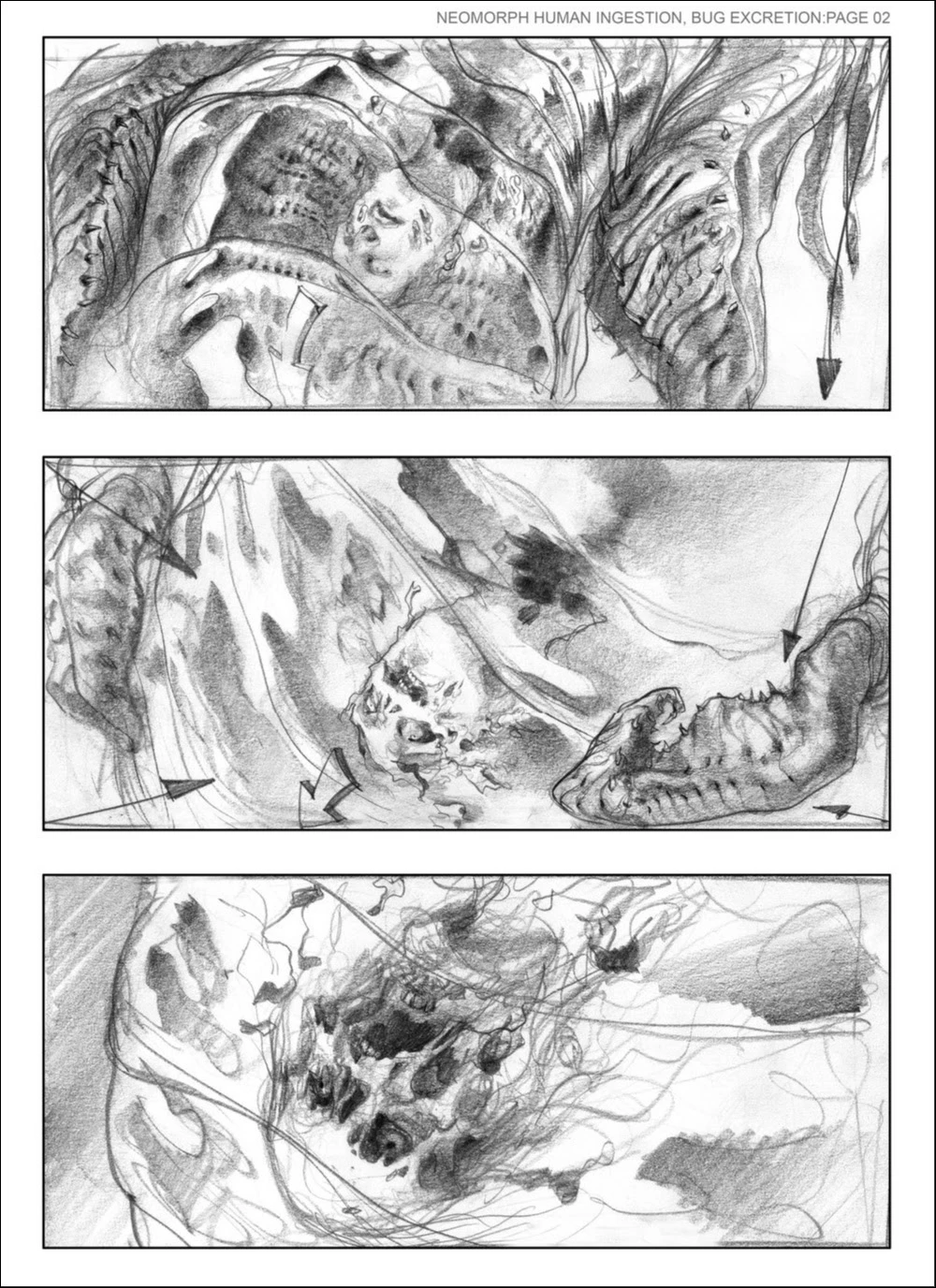
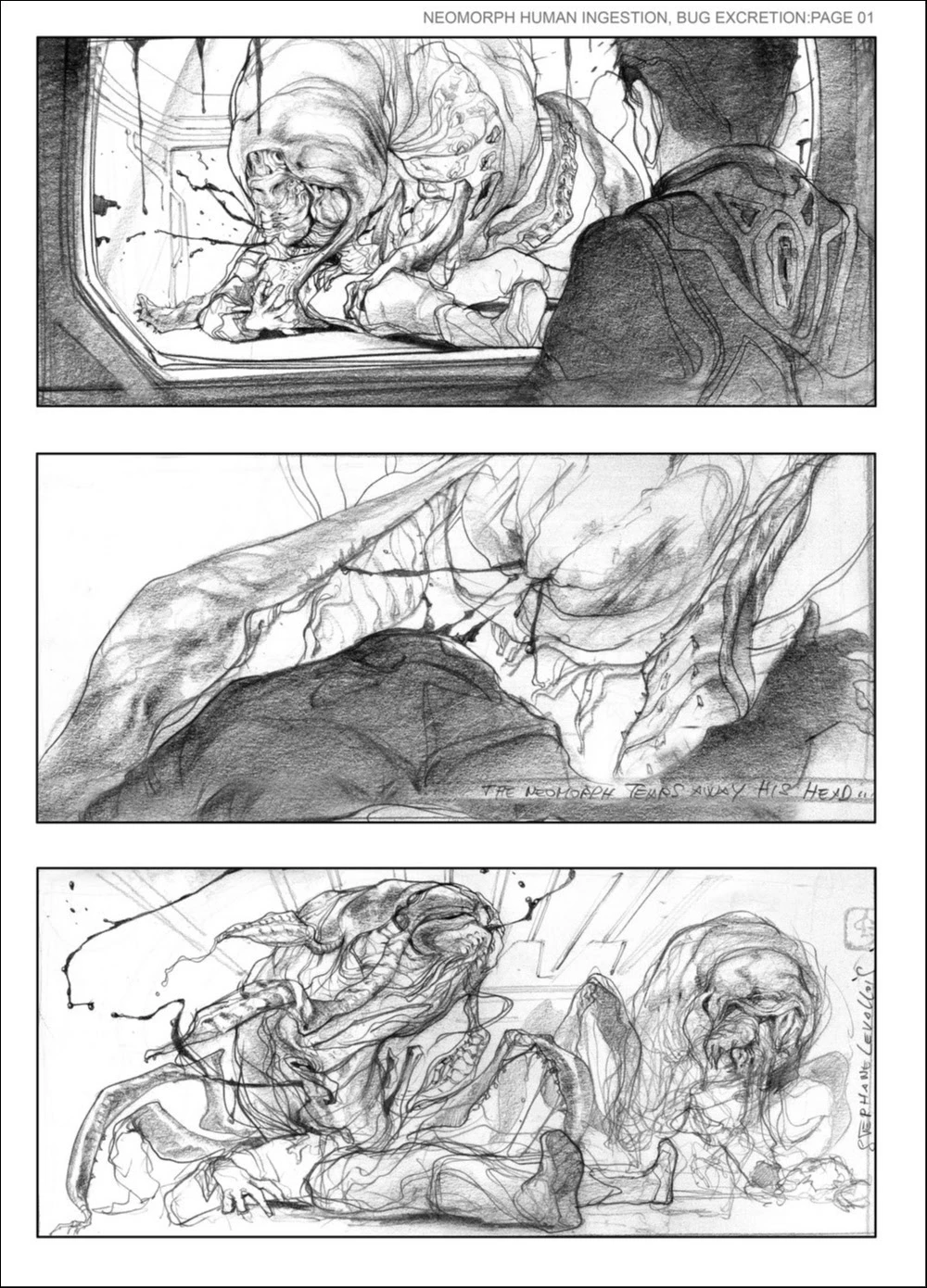
Blade Runner
Blade Runner is Scott's 1982 third feature. Today, it's hailed as an acclaimed cult film of complex visuals and themes. Thanks to its production design, it's regarded as one of the best all-time science fiction films.
The fact that Blade Runner has stood the test of time so well can largely be attributed to its lack of over-the-top CGI effects and gritty, low-tech approach, which shines through in the Blade Runner sketchbook, a collection of concept art and storyboards. Ridley Scott himself cites Hogarth drawings, photographs from the 30s and the work of Moebius as his inspiration.
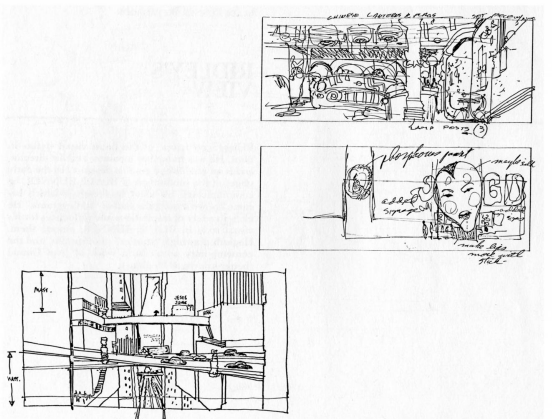
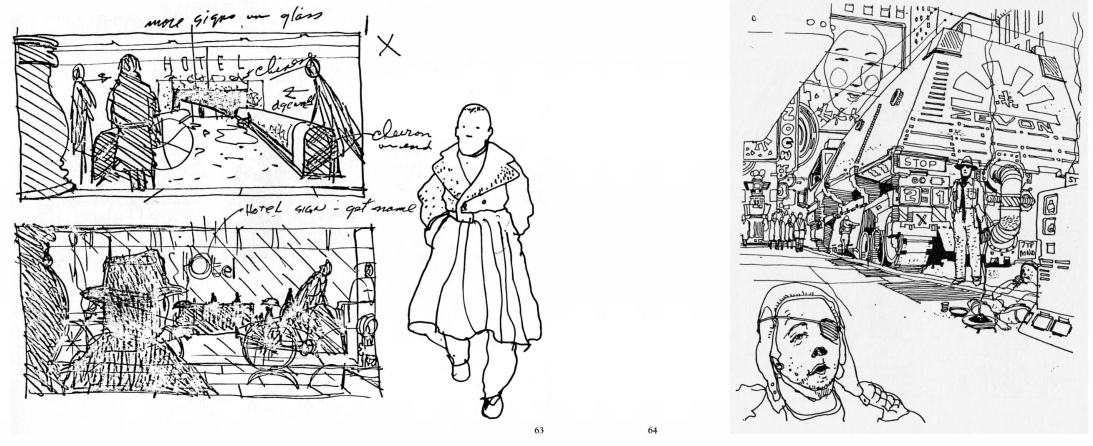
Ironically, when it came out, the long-winded movie of slow pacing became known as "Blade Crawler." Unlike the movie, a Marvel Comics version, first released in September 1982 was an instant success, featuring Al Williamson and Carlos Garzon's artwork and written by Archie Goodwin. The illustrations are heavily influenced by the movie and therefore in turn loosely resemble Scott's storyboards.
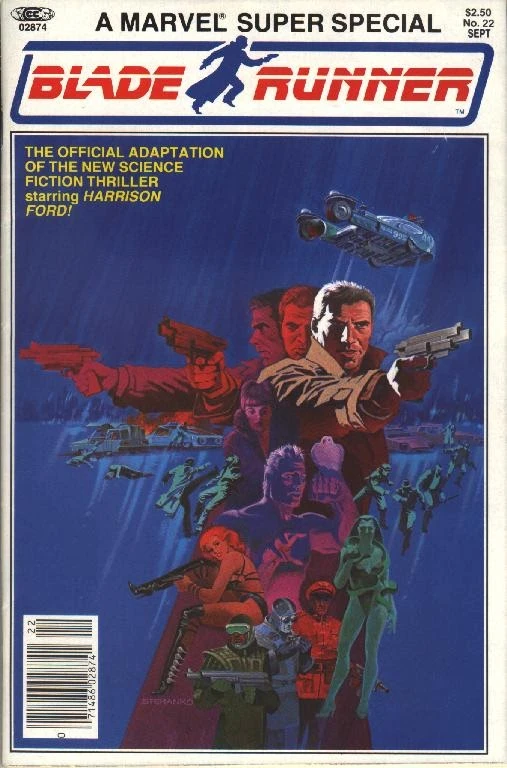
Ridley Scott turned down several superhero movies throughout his life and has voiced his distaste of the genre, slamming Walt Disney and Marvel for not using talented enough directors for franchises such as Avengers and Star Wars.
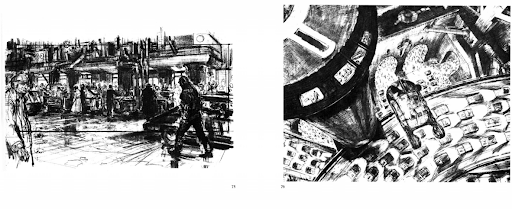
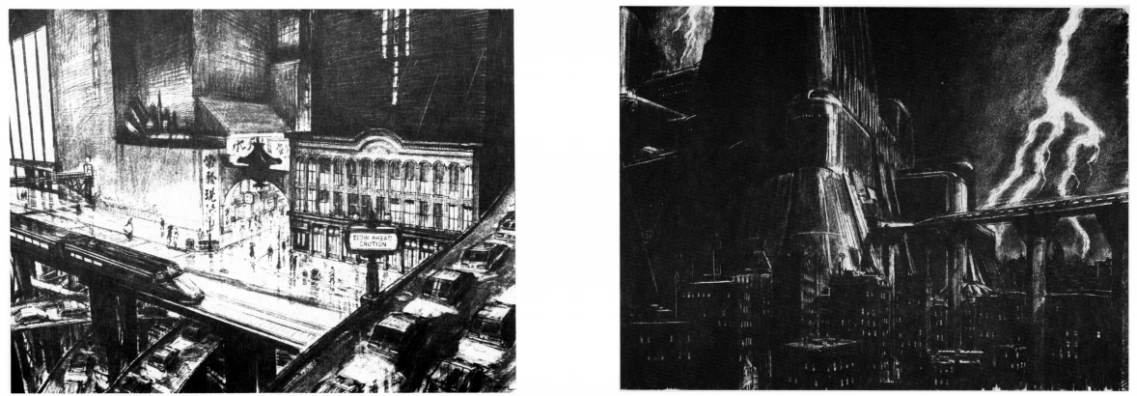
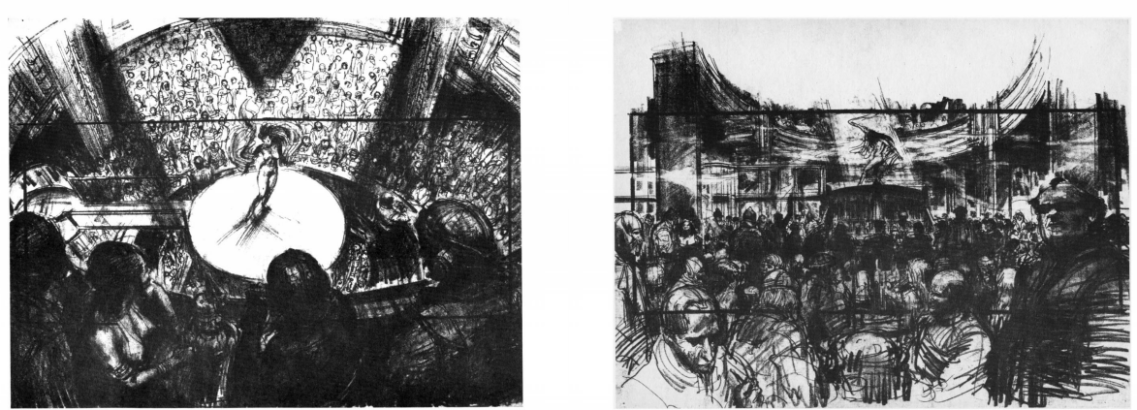
The Martian
For the tour de force that is The Martian, Ridley Scott was working off of a finished script by Drew Goddard, who adapted the hit Andy Weir novel about an astronaut stranded on Mars. Once more returning to space, Scott had an opportunity to create an otherworldly visual experience for which he worked with production designer Arthur Max again. The movie uses extensive sets and CGI.
Scott said that he quickly got pictures in his mind while reading the script and worked these out into thumbnails in his usual way to develop them into storyboards later. He identified four quadrants of the epic story: Nasa, a spaceship, the Jet Propulsion Laboratory and Mars, where most of the plot takes place and where actor Matt Damon performed mostly solo.
Scott wanted The Martian to be a realistic Sci-Fi, and NASA, therefore, advised the film crew. Incidentally, the story takes plans in the 2030s, when NASA actually plans to send humans to the distant planet. Inspired by Ridley Scott's The Martian, the agency hosted a Reddit AMA to discuss science and Mars missions.
_Ridley Scott talks about storyboarding blockbuster movies, such as The Martian, Prometheus and Gladiator_Black Hawk Down
The 2001 war film Black Hawk Down is based on the real events of a US military raid in Mogadishu. The screenplay by Ken Nolan was adapted from a non-fiction book by journalist Mark Bowden. For Ridley Scott, the production marked his third time working together with Arthur Max as head of the art department.
The production process included concept imagery and reference material that Max and Scott used for inspiration, which then informed their location scouting. They also worked with large-scale models and aerial photographs for months before developing and building actual set designs.
One of the concept artists on Black Hawk Down was French artist, Sylvain Despertz, who wanted to work in filmmaking from a young age and illustrated graphic novels in California under the mentorship of Moebius. His portfolio paved his way into concept, storyboard and design, and he ended up as a frequent contributor to Scott's art departments on several projects. A video shows the comparison between his storyboards and the final movie.
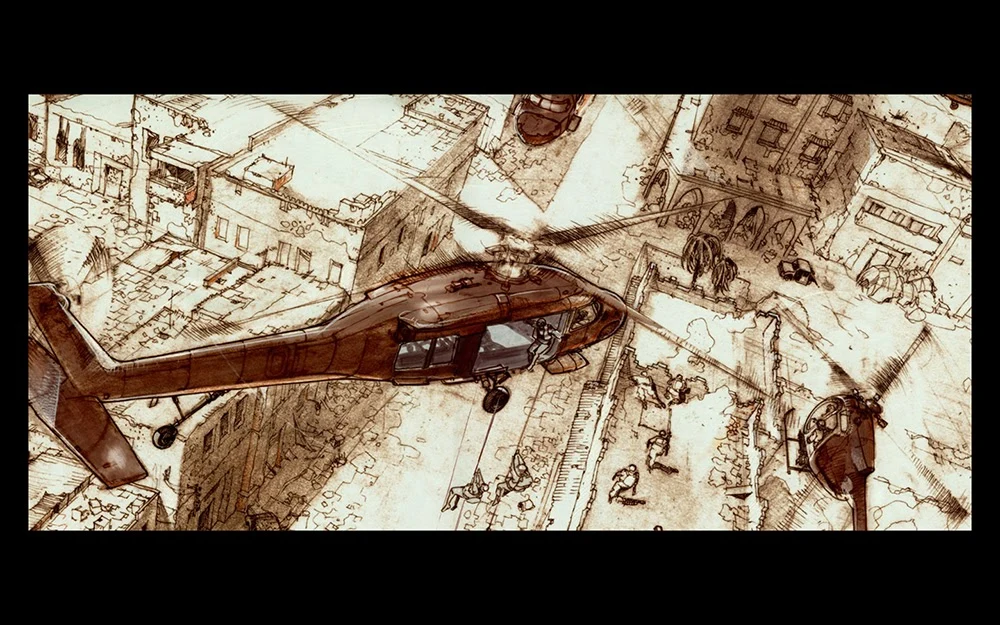
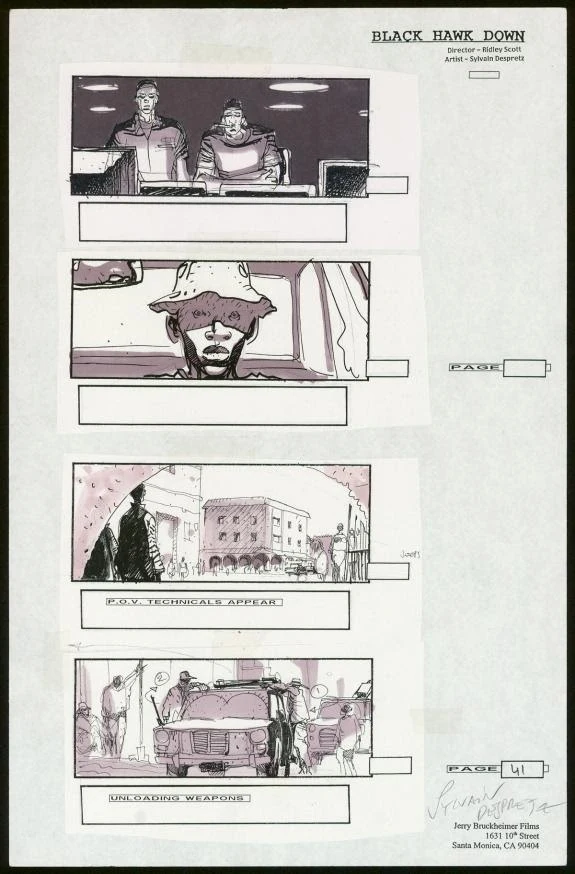
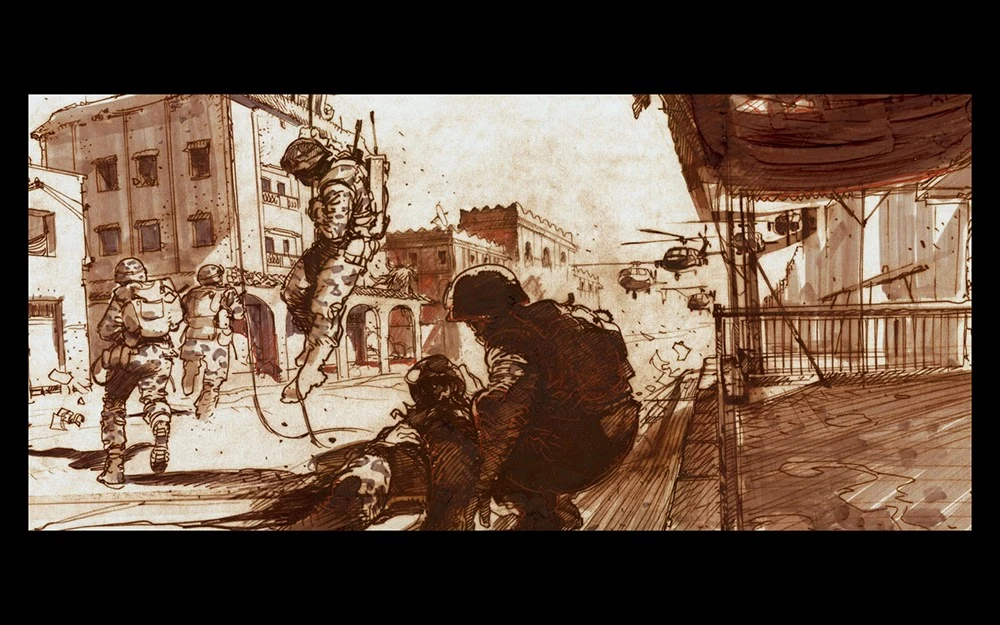
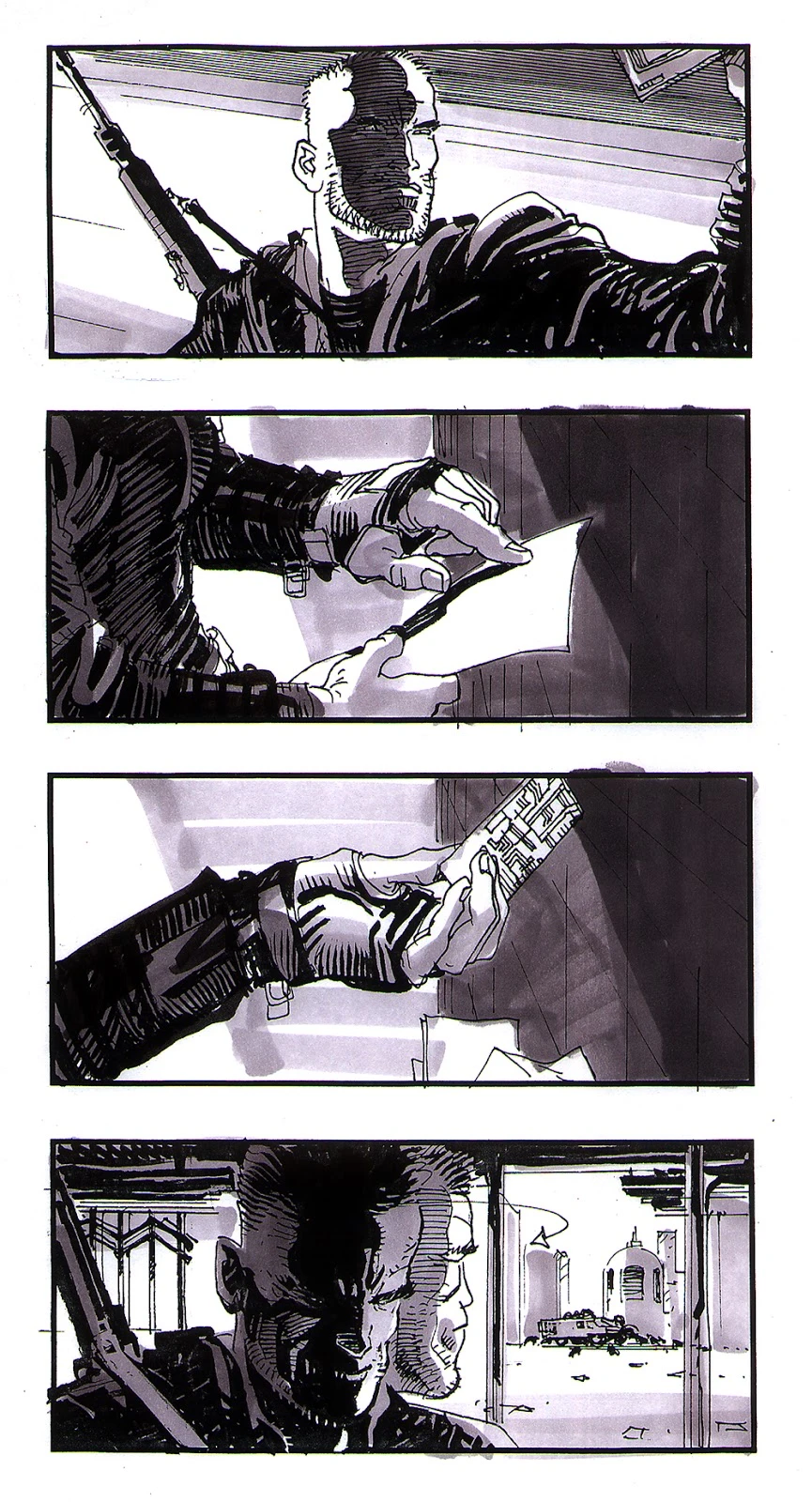
American Gangster
American Gangster from 2007 is based on the criminal career of real-life gangster Frank Lucas, notorious for smuggling heroin on American service planes returning from the war in Vietnam. Written by Steven Zaillian, Ridley Scott directed and produced the film starring Denzel Washington and Russel Crowe as the two lead acts and opposing forces.
In terms of visual style, Scott chose period detail and a gritty recollection of classic gangster films paired with masterful, often subtle cinematography to create resonating images. The vivid and violent energy is at times reminiscent of Martin Scorsese's work.
Gladiator
The epic historical drama Gladiator, released in 2000, received praise for Scott's direction, the visuals, and Russell Crowe and Joaquin Phoenix's performances. French concept and storyboard artist Sylvain Despretz worked for more than a year on the motion picture.
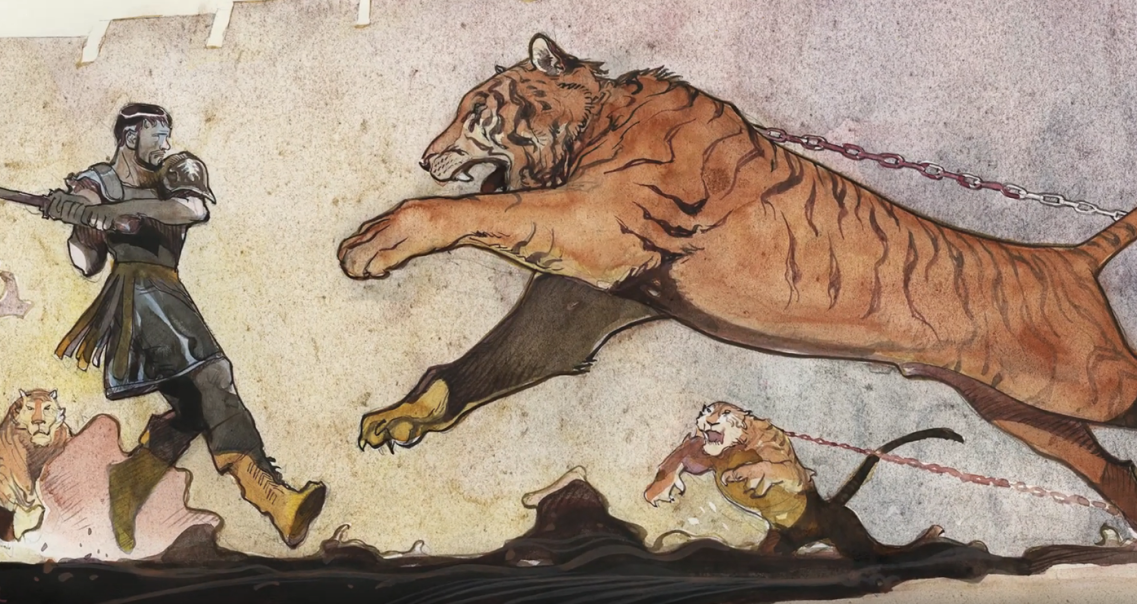
He created costume sketches of great anatomical detail to show the actors' physical mass and their on-screen presence instead of the typical watercolour sketches by costume designers. His storyboards for the film show the dynamics of fight scenes, often with arrows to point out directions, and even comic-book-like effects, such as creatures leaping out of the panel.

Thelma & Louise
Both a critical and commercial success, Thelma & Louise from 1991 received six Academy Award nominations, including Best Director for Ridley Scott and Best Actress for both Geena Davis and Susan Sarandon for their titular roles.
Ridley Scott also co-produced the American female buddy road film, which has both been praised for its strong feminist overtones as well as criticized for portraying a presumably negative view of men. Thelma & Louise includes Americana imagery and culture, female empowerment vs misogyny and a climax that is both a tear-jerker and a notably iconic scene in modern cinema.
The Duellists
Ridley Scott's directorial debut was the 1977 historical drama The Duellists, based on the short story "The Duel" by Joseph Conrad. David Puttnam produced the film at Paramount on a shoestring budget. The film is memorable for its series of duels, for which Scott used a diversity of styles. His visual style and narrative structure are widely compared to Stanley Kubrick's Barry Lyndon, which was released only two years earlier.
The Duellists, however, features Scott's undeniable personal touch. With costumes by Tom Rand and production design by Peter Hampton, this first film has the same exceptional qualities as Ridley Scott's later historical epics. The many short bursts, later to be seen in Alien, were meticulously pre-planned with storyboards and called for a disciplined shot list. Thanks to Scott's vision, The Duellists won the Best First Film award at the Cannes Film Festival.